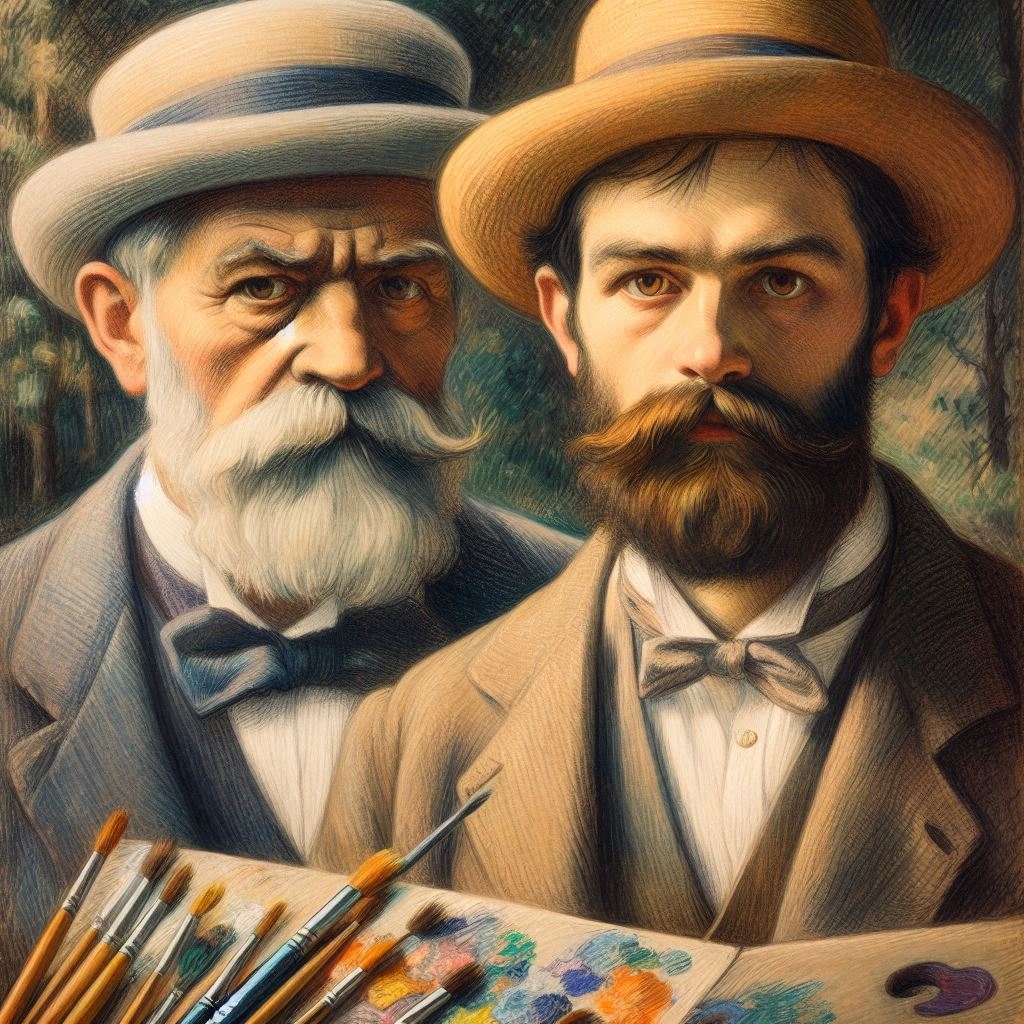Paul Cézanne and Pierre-Auguste Renoir, both prominent figures in the art world, shared several commonalities in their painting styles and artistic paths, despite their distinct individual approaches. Here are some key aspects they had in common:
Impressionist movement:
Both artists were associated with the Impressionist movement, although Cézanne's relationship with the group was more complex. Renoir was a central figure of Impressionism, while Cézanne participated in the first two Impressionist exhibitions but gradually distanced himself from the group.
Focus on light and color:
They were deeply interested in capturing the effects of light and color in their works. Renoir is renowned for his vibrant use of color and light to depict human figures and landscapes. Likewise, Cézanne's exploration of color relationships and his method of constructing forms with splashes of color significantly influenced the development of modern art.
Experimentation with the technique:
Both artists experimented with different techniques to realize their artistic visions. Renoir's brushwork varied from loose and fluid to more textured in his later works. Cézanne developed a unique approach that involved the use of small, repetitive brushstrokes to construct complex fields of color and form.
Representation of everyday life:
They often depicted scenes of everyday life, although the subjects varied. Renoir is famous for his paintings of social gatherings, leisure activities, and intimate portraits. Cézanne, while also painting still lifes and portraits, concentrated largely on landscapes and his beloved Mont Sainte-Victoire.
Influence on modern art:
Both artists significantly influenced the direction of modern art. Renoir's emphasis on the beauty and sensuality of the human form can be seen in the works of later artists. Cézanne's innovative approach to composition and his abstraction of natural forms paved the way for the Cubists and other avant-garde movements.
Relationship with the Parisian art scene:
Both were active on the Parisian art scene in a period of great artistic innovation. They interacted with and were influenced by their contemporaries, contributing to the dynamic environment that gave rise to various modern artistic movements.
Despite these commonalities, their individual styles and philosophies were distinct, with Renoir more inclined towards the celebration of beauty and Cézanne towards the structural and abstract aspects of painting.
Paul Cézanne and Pierre-Auguste Renoir, both prominent figures in the art world, shared several commonalities in their painting styles and artistic paths, despite their distinct individual approaches. Here are some key aspects they had in common:
Impressionist movement:
Both artists were associated with the Impressionist movement, although Cézanne's relationship with the group was more complex. Renoir was a central figure of Impressionism, while Cézanne participated in the first two Impressionist exhibitions but gradually distanced himself from the group.
Focus on light and color:
They were deeply interested in capturing the effects of light and color in their works. Renoir is renowned for his vibrant use of color and light to depict human figures and landscapes. Likewise, Cézanne's exploration of color relationships and his method of constructing forms with splashes of color significantly influenced the development of modern art.
Experimentation with the technique:
Both artists experimented with different techniques to realize their artistic visions. Renoir's brushwork varied from loose and fluid to more textured in his later works. Cézanne developed a unique approach that involved the use of small, repetitive brushstrokes to construct complex fields of color and form.
Representation of everyday life:
They often depicted scenes of everyday life, although the subjects varied. Renoir is famous for his paintings of social gatherings, leisure activities, and intimate portraits. Cézanne, while also painting still lifes and portraits, concentrated largely on landscapes and his beloved Mont Sainte-Victoire.
Influence on modern art:
Both artists significantly influenced the direction of modern art. Renoir's emphasis on the beauty and sensuality of the human form can be seen in the works of later artists. Cézanne's innovative approach to composition and his abstraction of natural forms paved the way for the Cubists and other avant-garde movements.
Relationship with the Parisian art scene:
Both were active on the Parisian art scene in a period of great artistic innovation. They interacted with and were influenced by their contemporaries, contributing to the dynamic environment that gave rise to various modern artistic movements.
Despite these commonalities, their individual styles and philosophies were distinct, with Renoir more inclined towards the celebration of beauty and Cézanne towards the structural and abstract aspects of painting.
















